Sony A7 III Review
Sony A7 III Review
A simply excellent full-frame camera at the price
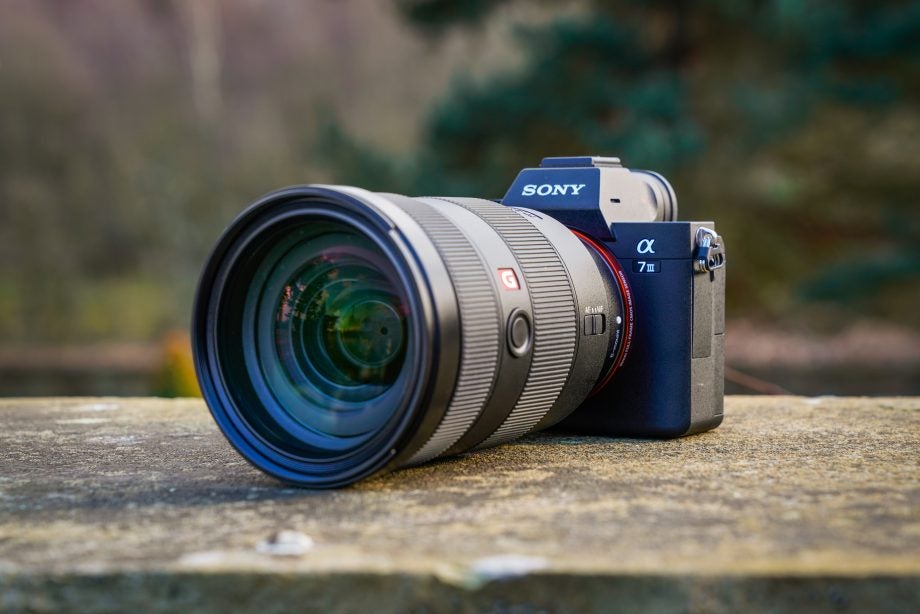
Verdict
Pros
- Excellent value for money
- Improved battery stamina
- Fast and responsive autofocus system
- Revised button layout for intuitive control
Cons
- AF point illumination could be improved
- Convoluted menu system
- Thin plastic port covers aren’t weather-sealed
- Handles poorly with large gloves in cold climates
Key Specifications
- 24.2 MP full-frame BSI CMOS sensor
- ISO 100-204,800 (extended)
- 10fps shooting
- Tilting rear touchscreen
- 5-axis in-body stabilisation
- 4K video recording
What is the Sony A7 III?
It’s hard to believe that Sony’s A7-series has been in existence for well over four years now. It feels like only yesterday the manufacturer presented us with the original A7 and A7R, yet here we’re looking at the third release of its most basic full-frame mirrorless camera, which advances in a number of ways on the Sony A7 II that arrived at the end of 2014.
Over the years, Sony’s A7-series has picked up great momentum. This has been achieved by introducing new and innovative technologies, refining the design, and dealing with the initial concerns surrounding the number of full-frame E-mount lenses available.
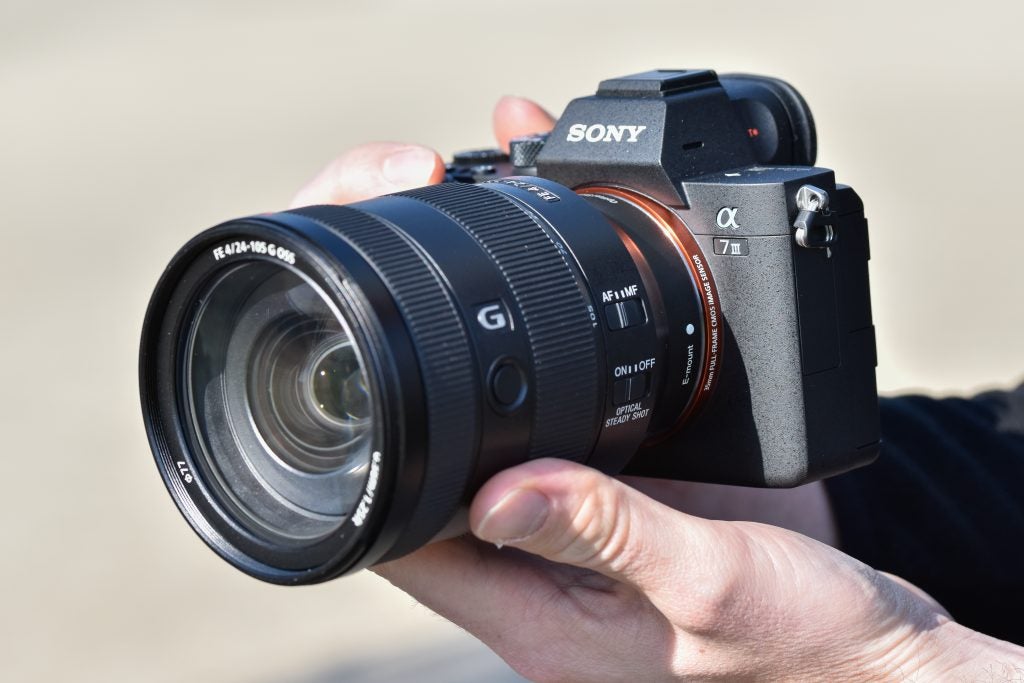
We’re now at the stage that there are no fewer than 25 lenses in Sony’s lineup. This excludes an ever-increasing number of third-party alternatives from the likes of Sigma, which has recently started making its highly acclaimed Art lenses available in Sony E-mount.
For those who are after a general-purpose, highly versatile and more affordable full-frame camera than the A7R III or A9, the A7 III looks very appealing when compared to the current DSLR competition. It incorporates many of the niceties of the A7R III and A9, at a price that falls below £2000 at launch. Don’t be mistaken by the ‘basic model’ status that Sony gives it, either: we’re looking at one very capable camera indeed.
Related: Best cameras
Sony A7 III – Features
Like the original A7 and A7 II, the A7 III is equipped with a 24.2-megapixel full-frame sensor. The difference is that it’s an entirely new chip that benefits from backside-illuminated architecture. Sony says this provides an improved noise response at high sensitivities and delivers an impressive 15 stops of dynamic range at base ISO. This allows vast amounts of highlight and shadow information to be recorded into the camera’s 14-bit Raw files.
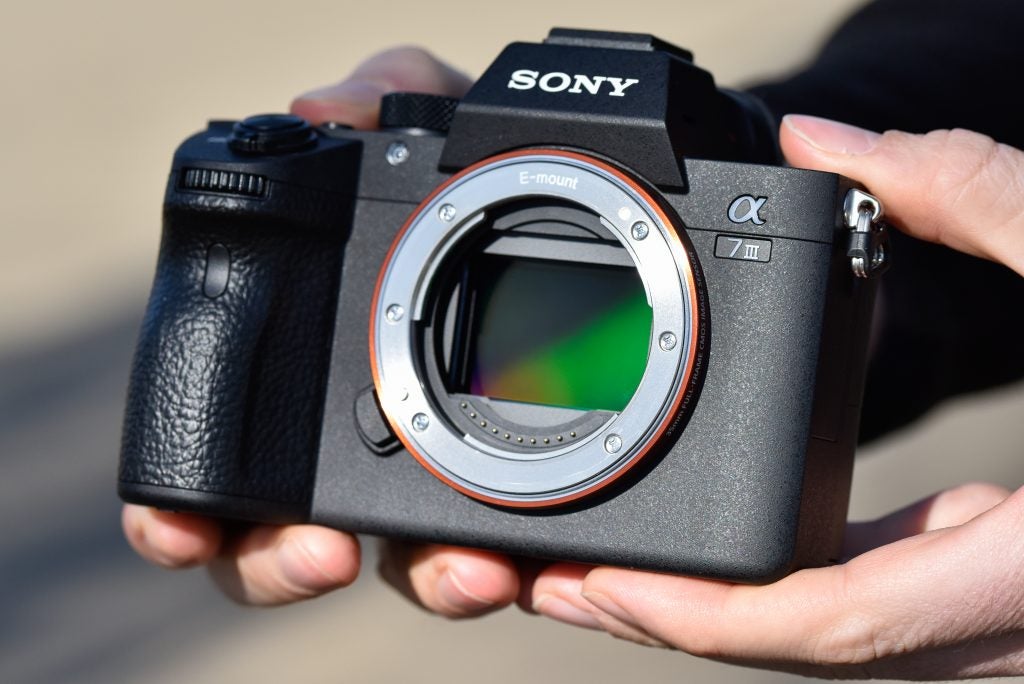
Glance over the specs and you’ll notice that maximum sensitivity now extends to ISO 204,800, just like the Sony A9. This gives it a two-stop advantage over the A7 II, which could be pushed to ISO 51,200. At the low end, the A7 III can shoot at ISO 100, with ISO 50, ISO 64 and ISO 80 also being available from the extended settings.
The sensor is supported by a powerful Bionz X processor and the same front-end LSI that’s influenced many of Sony’s latest cameras being able to shoot faster and handle vast volumes of data more efficiently. The speed at which it can shoot continuously with autofocus and exposure adjustment has soared up to 10fps from a rather pedestrian 5fps on the A7 II.
Users who regularly photograph fast-moving subjects will also appreciate the improved buffer, which allows as many as 177 JPEGs, 89 compressed Raw files or 40 uncompressed Raw files to be taken in a burst. Although it has nothing on the Sony A9’s burst and buffer capabilities, the A7 III is certainly no slouch when it comes to speed. Employing the fully-electronic shutter, it’s possible to shoot silently when you want to avoid disturbing a subject or bring attention to one’s self.
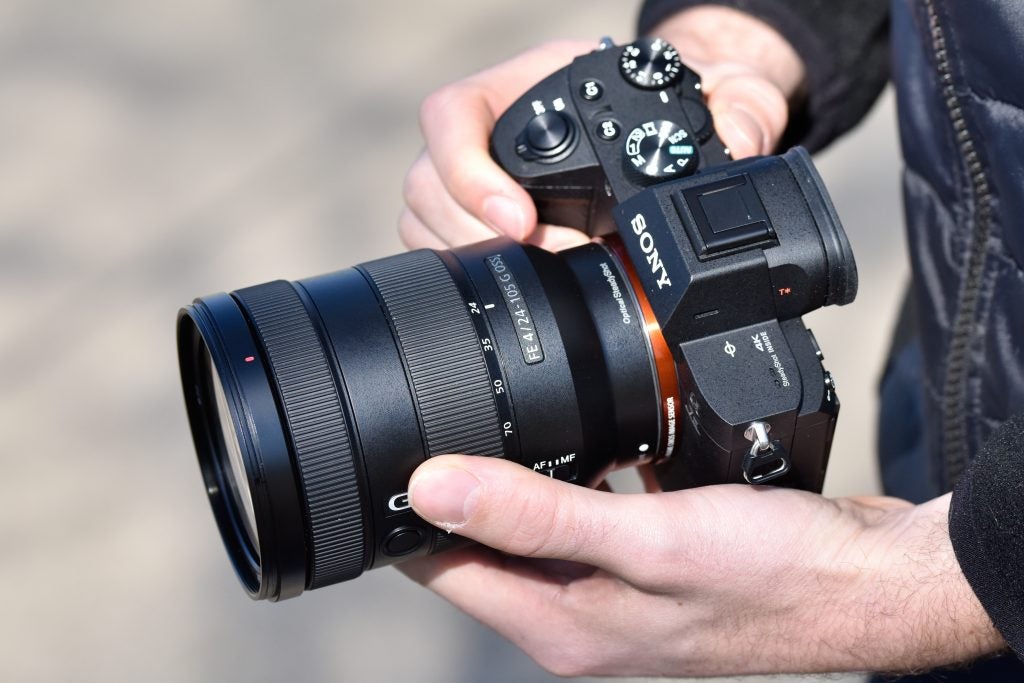
The headline feature of the A7 II was its 5-axis in-body stabilisation, and this advanced IS system carries across to the A7 III. As well as being able to compensate for the common pitch and yaw movements, whereby the lens rotates upwards and downwards, or from side-to-side, it adds in corrections for movements of the camera vertically and sideways, with the fifth axis corresponding the rotational correction around the lens axis. By refining the algorithms of the IS system, the A7 III offers up to 5 stops of stabilisation compared to 4.5 stops on the A7 II.
Turning our attention to autofocus, the 117 phase-detection and 25 contrast-detection points on the A7 II have been replaced by a superior arrangement of 693 phase-detection points and 425 contrast-detection points. These cover 93% of the frame. Autofocus is further improved by employing the same AF advancements as used in the Sony A9.
The combination of fast image sensor readout and Sony’s Steadfast AF tracking was incredibly impressive on the A9, and if the A7 III is anywhere near as good, I expect it to lock onto unpredictably fast-moving subjects with ease. The advanced AF algorithms allow the camera to focus down to -3EV for more reliable focusing in dark situations. Plus, anyone wishing to focus fast and accurately using A-mount lenses can do so by purchasing the optional the LA-EA3 mount adapter (£130).
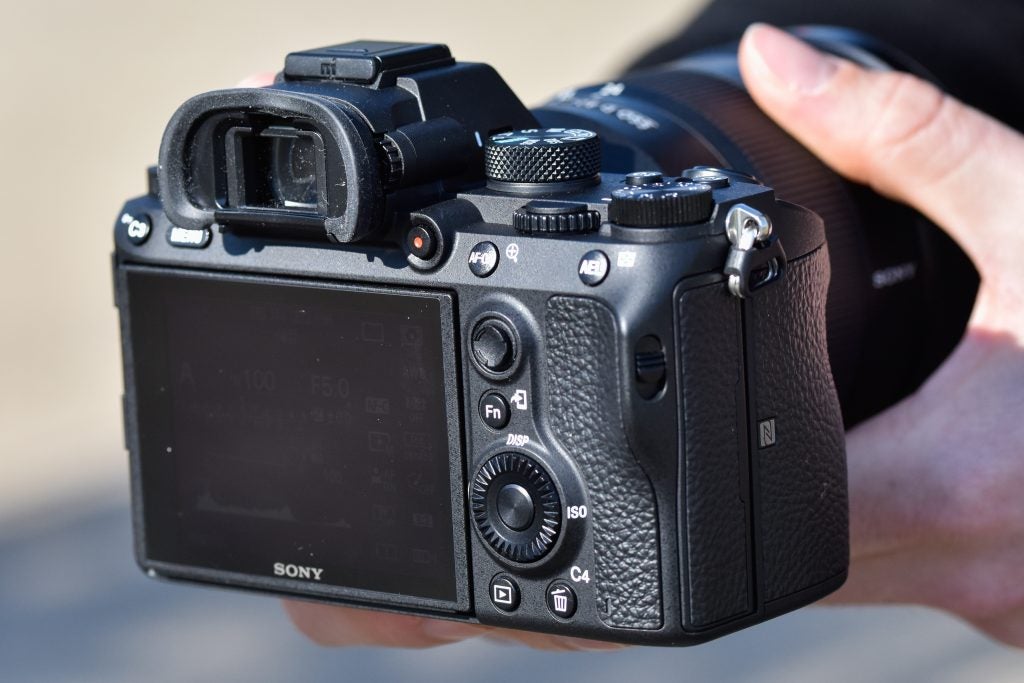
Other improvements on the A7 II are found at the rear, where a 2.3m-dot EVF with 0.78x magnification and 3in 922k-dot LCD touchscreen take pride of place. The EVF has a lower resolution than the A7R III, but is complete with Zeiss T* coatings to reduce obtrusive reflections.
As for the touchscreen, this allows users to focus by tapping the display or dragging their thumb over the screen’s surface when the camera is raised to the eye. The implementation of the touchscreen could be improved further however, which I’ll touch on in more detail shortly. With regard to the manoeuvrability of the screen, it tilts upwards by 107 degrees and down by as much as 41 degrees, providing reasonable flexibility when composing and monitoring.
Another big advance sees the A7 III record 4K video internally, using 6K full pixel readout for super-high-quality footage. The camera also supports Hybrid Log Gamma for 4K HDR output, like the A7R III before it, along with S-Log2 and S-Log3 gamma modes to retain as much dynamic range as possible for easier colour grading during post-production.
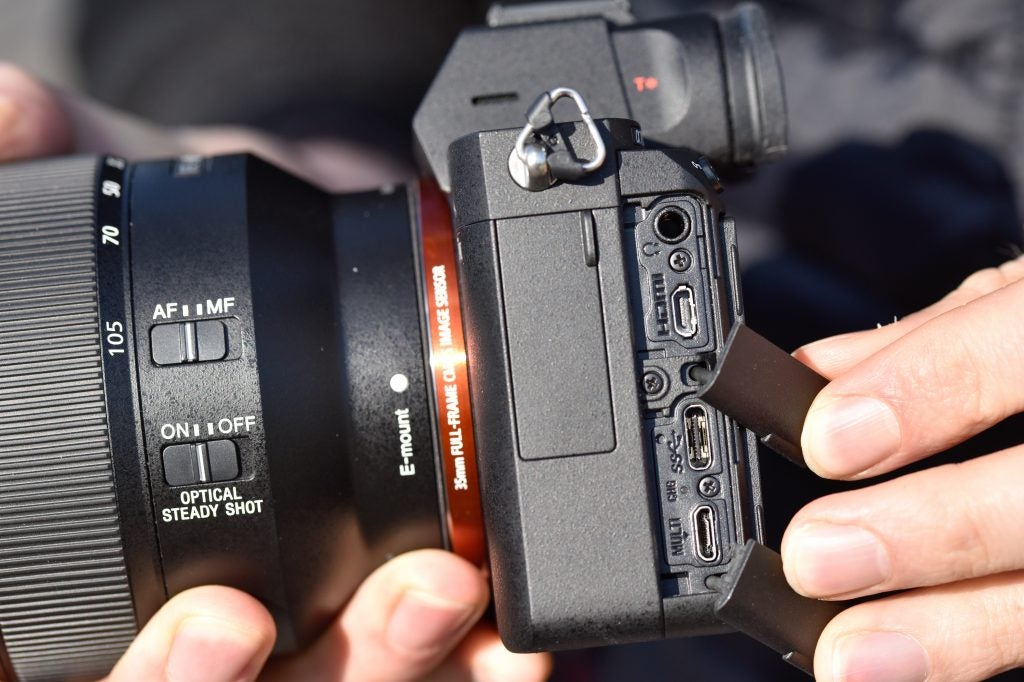
There’s also a wide array of functions to satisfy the workflows of professional videographers, including clean HDMI output, time code/user bits (TC/UB), zebra function, simultaneous proxy movie recording, extraction and separate storage of a still from a movie, and Gamma Display Assist function, among others.
Microphone and headphone sockets are built in, but these are found behind separate plastic covers at the side of the camera’s body. The third plastic cover grants access to a USB 3.1 socket and micro-USB terminal, which are useful for power supply or tethered operation from a computer using Sony’s Imaging Edge software.
The A7 III rounds off its impressive feature set with Wi-Fi and NFC connectivity. With Sony’s one-touch remote and one-touch sharing functionality, it’s quick and easy to create a connection to the PlayMemories Mobile app, from where images can be transferred and shared in a matter of seconds.
Sony A7 III – Customisation
Sony’s A7-series has gained an excellent reputation for offering photographers a high level of customisation in the past, and the A7 III is no different. Head to custom operations in the main menu and you’ll find there are as many as 81 functions that can be assigned to no fewer than 11 custom buttons (which Sony refer to as keys) dotted around the body.
Functions can be assigned to stills, movies and playback sets, and the way the front and rear command dials operate can be reversed if you’d prefer the front dial to control shutter speed and the rear dial to control aperture.
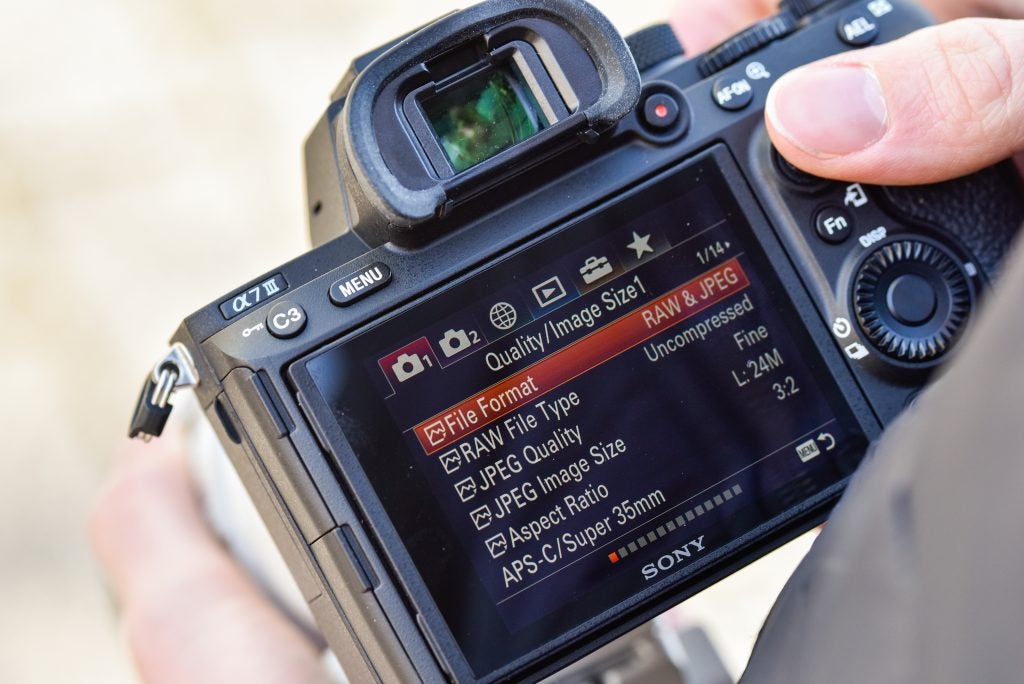
The function menu, which is loaded by hitting the dedicated Fn button is a great way to quickly access regularly used setting; it can save vital seconds trawling through the extensive main menu to find what you need. This, too, can be customised to your liking – but we’re not yet at the stage where the icons and settings intertwine with touchscreen control.
The easiest way to navigate the settings from the function menu is to use AF toggle, which lies directly above the Fn button. If you’d prefer to create and arrange your own menu based on the settings you regularly use, this is simple enough to do from the My menu.
Sony A7 III – Body and design
The design of the A7 III falls in line with the Sony A7R III and A9. Viewed from the front it looks very similar to the A7 II, with the new badge being the only obvious difference. Study the A7 III a little closer, though, and you’ll start to notice there’s a lot more to it – such as the enlarged handgrip. Not only does this help enhance the feel and make it just that little bit more comfortable to wrap the average-sized hand around, it also allows the body to accommodate a newer, larger battery.
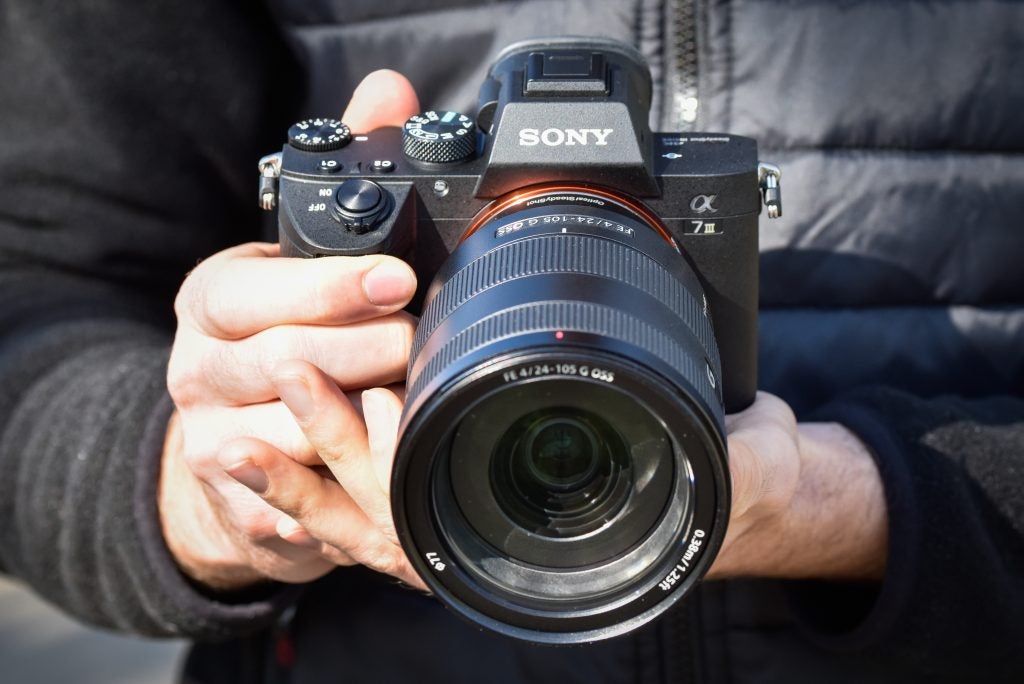
As any user of an A7-series camera with the older-style NP-FW50 will tell you, battery life was shockingly poor – to the extent that several spares had to be carried at all times. With the A7 III’s NP-FZ100 battery you can shoot up to 610 shots using the EVF, or 710 shots using the screen, which is a notable improvement.
If you’d like even greater shooting stamina then there’s the option to attach Sony’s VG-C3EM battery grip (£329). The beauty of the A7 III sharing the same footprint as the A7R III and A9 is that all three models accept the same battery grip. Unlike some grips that accept only one extra battery, the Sony grip accepts two NP-FZ100 batteries. It’s made rigid and lightweight like the body, with an identical magnesium-alloy construction.
There has long been an element of uncertainty about just how weatherproof Sony’s A7-series cameras are, and whether they’re built to survive the same brutal conditions as many pro-spec DSLRs with weather-sealing. To give it a fighting chance, the body is fortified by a lightweight, high-rigidity magnesium-alloy top cover, front cover and internal frame.
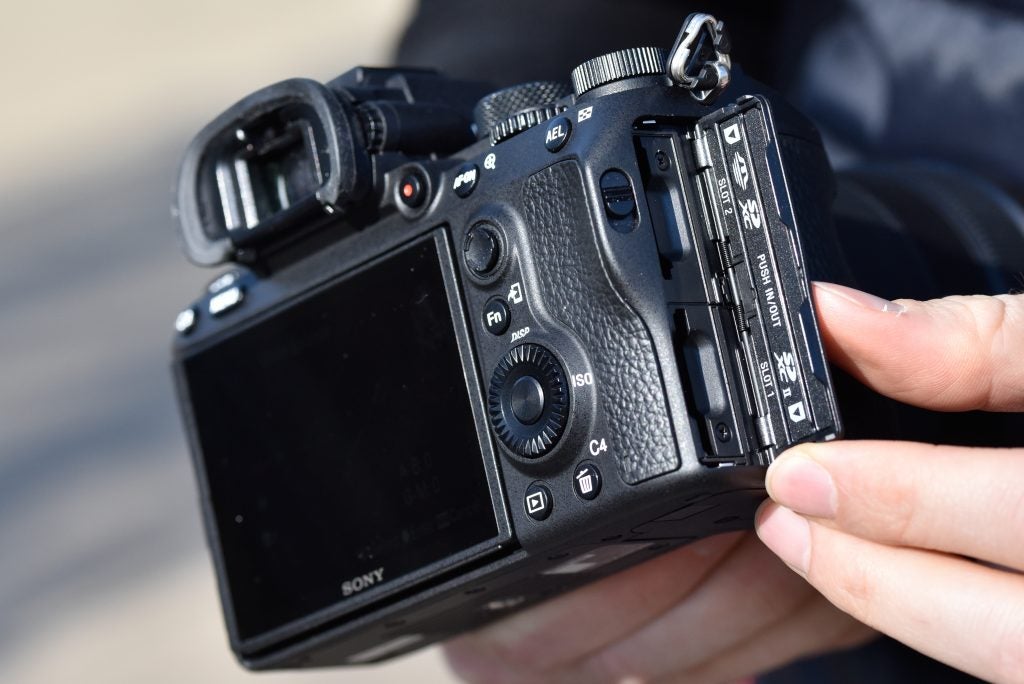
Major buttons and dials are sealed, and this sealing extends throughout the body to prevent dust and moisture creeping in. Sony does say it isn’t guaranteed to be 100% dust and moisture-proof; however, as I discovered, it came to no harm when I was caught out in a persistent rain shower and continued to work without a glitch.
The matte-black speckled finish is a lot smarter than the clean, smooth semi-gloss black finish of the original A7, and the texture of the rubberised handgrip and thumb rest offers a good level of adherence in your hands when they’re wet.
By moving the poorly positioned movie-record button on the A7 II above the screen to the right of the EVF, it has freed up space for a larger memory card slot door. Behind this you’ll find two card slots, one of which is compatible with the faster UHS-II standard. The two loaded cards can be configured as you like; you can backup files to each card simultaneously, record different file types to the two card slots, or tell the camera to switch across to the second card after the first card fills up.
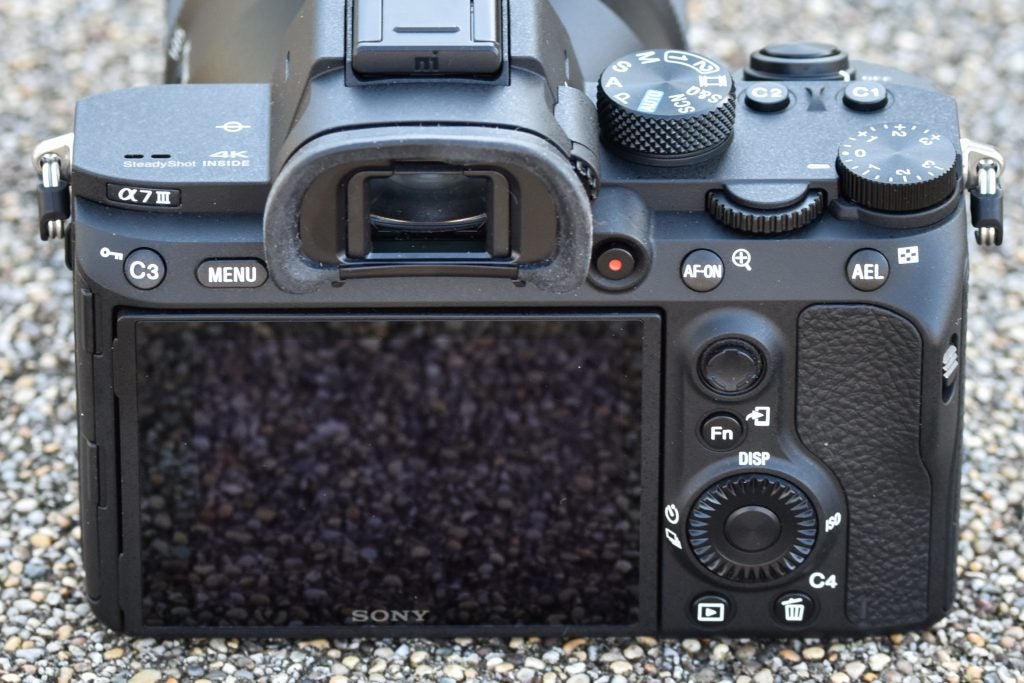
There are plenty of other changes at the rear of the camera. A new exposure lock (AEL) button is located just below the exposure compensation dial, a new AF-ON button resides nicely to the left of it and a new custom button (C3) is added next to the main menu button.
The focus-point joystick that we welcomed on the A7R III and A9 also replaces the old AF/MF switch and AEL button. This transforms the operation of shifting the focus point around the frame for the better, making the camera feel far more intuitive to use when you’re working quickly or under pressure. Depressing the joystick with your thumb returns the focus point back to centre in an instant and in playback mode it mimics the same functions as the four-way controller.
Beneath the AF joystick you get a larger rear dial that protrudes further from the body. It’s less fiddly to use than the small rear dial on the original A7 and A7 II, and makes the job of cycling through images more enjoyable. Make sure you avoid depressing it at the same time, however, or you’re likely to load the volume settings or change the display view by accident.
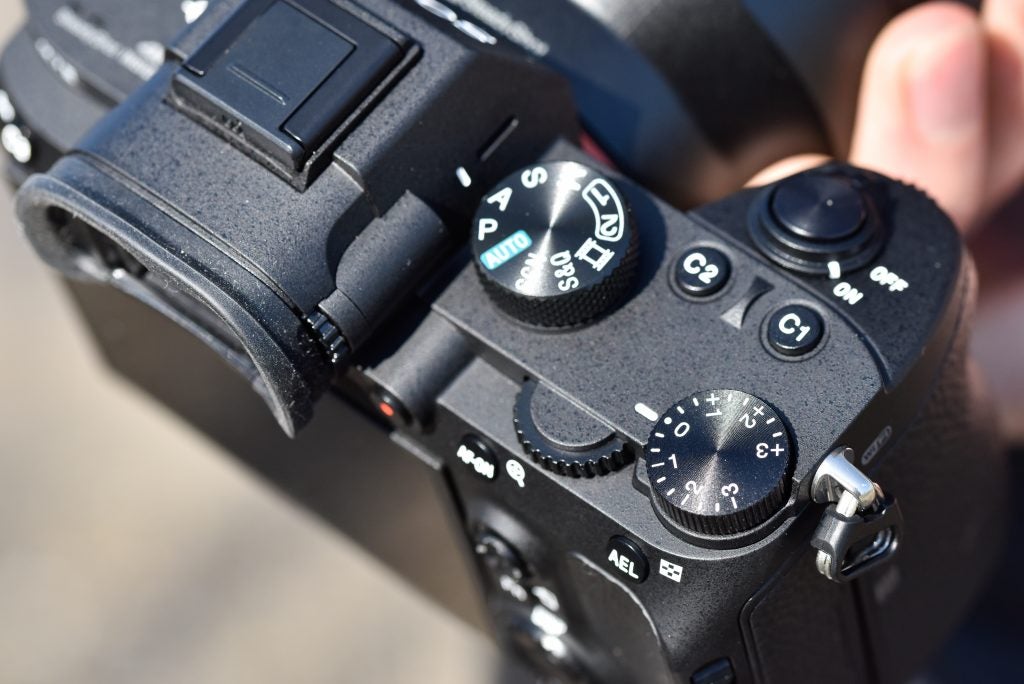
We’ve seen a few camera manufacturers introduce top-plate LCD displays on their latest mirrorless models of late, but Sony isn’t one of them. Custom buttons and the exposure compensation dial take up the space on the top plate where a small LCD could be introduced.
It’ll be interesting to see if any of the current competition in the mirrorless market influences Sony to make a change when it comes to designing the top plate of its fourth generation of A7-series cameras. Personally, I don’t see it being a deal breaker that the A7 III doesn’t feature a top plate display as the screen can be flipped out and referred to easily enough, however the millions of DSLR users out there who are used to glancing down at exposure settings when the camera is resting around the neck are likely to disagree.
The design, layout and handling has come on a long way from where the A7-series began and you get a good sense of the improvements straight away coming from the A7 II. There’s a great deal to like, but it still isn’t perfect. The exposure compensation dial still only allows control up to -/+3EV, and the plastic doors at the side are too flimsy and don’t offer any weather-resistance.
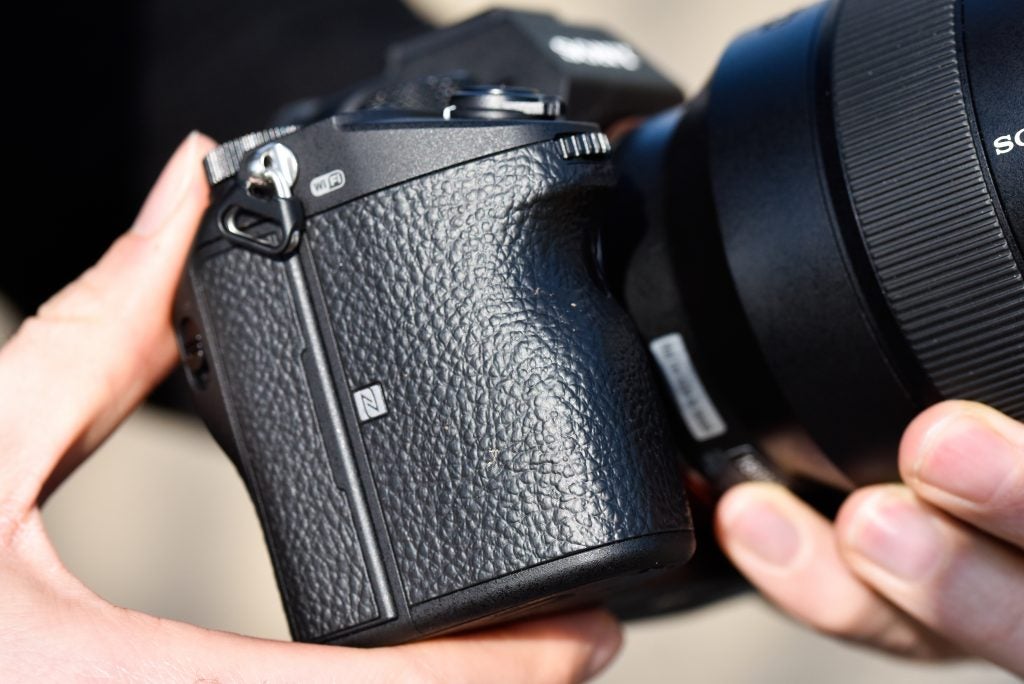
However, the body is likely to be more than robust enough for most. I wouldn’t go as far as saying it’s built like a tank, or is the best choice if you regularly work in cold climates. Thick gloves are tricky to squeeze in between a large lens and the grip, plus the fairly small size of the buttons makes operation in colder weathers with gloves quite a challenge.
Sony A7 III – Performance
There’s no getting away from the fact that the A7 III offers a sensational spec for the price, and the more you use it, the more you realise just how capable a camera it is.
When I tested the Sony A7 II three years ago, I was rather underwhelmed by its autofocus tracking. I found it was far happier predicting slow and steady subjects across the frame than those that were erratic or fast in their behaviour. I’m glad to report the A7 III is in an entirely different league when it comes to acquiring focus on moving subjects. And it’s the evolved image processing system and impressive AF algorithms that are inherited from the Sony A9, which we must be thankful for.

Sony FE 70-200mm f/2.8 G Master, 1/1000sec at f/2.8, ISO 2500
With the focus mode set to continuous (AF-C) and the focus area set to Zone, I captured a high hit-rate of pin-sharp shots of a fast game of rugby using the Sony FE 70-200mm f/2.8 G Master lens. The autofocus system showed no difficulty keeping apace with players running directly towards the camera at speed. Further testing of the focus system at a horse racing event confirmed that the A7 III is more than up to the job of acquiring focus at the speed that one needs when shooting unpredictable action or sport.
The new AF-ON button also ties in extremely well with the fast AF response and high-speed shooting capabilities. It’s a great addition for back button focusing, whereby focusing is isolated from the shutter button. Adding an AF-ON button underlines that Sony has listened to criticisms about the two previous generations of the A7.

Sony FE 24-105mm f/4 G OSS, 1/1000sec at f/5.6, ISO 800
Sony’s signature Eye AF mode demonstrated that it’s highly effective for portraiture. It showed no hesitancy detecting eyes in the frame to ensure they’re the key point of focus. Eye AF is now supported in AF-C mode, too, not only AF-S like the A7 II. This, combined with the improved AF speed, makes it easier to shoot a sharp portrait of someone who’s moving, even if the person looks down and away from the camera or is backlit with their face in partial darkness.
While all of the above is very complimentary, there’s one underlying issue with the focusing system that’s yet to be addressed. As is the case with the A7R III and A9, the focus point is again represented in dark grey, which is invisible at times. Shoot at night, or where the scene is predominately dark, and you’ll instantly become aware of the problem. The focus point does illuminate green to confirm focus has been achieved, but I’d like to see the outline colour of the AF point changed to orange to make it more visible.

Sony FE 85mm f/1.4 G Master, 1/3200sec at f/1.4, ISO 3200
The effect of the 5-axis image stabilisation system is so powerful that you can clearly tell when it’s switched on or off. With a sound handheld technique and a soft press of the shutter, it’s possible to achieve sharp shots down to 1/3sec using a fairly wide focal length lens. Use a longer, heavier zoom such as a 70-200mm and you’ll get consistently sharp handheld shots down to around 1/25sec, if you have a steady hand and brace the viewfinder up against your eye.
With lenses that are optically stabilised, such as the Sony FE 24-105mm f/4 G OSS supplied for review, SteadyShot is controlled from the lens. Use the A7 III with a non-stabilised lens and you’ll find it’s activated from the camera. For ease and convenience, I ended up assigning SteadyShot to a custom button.
Testing the IS system while filming a series of short video clips resulted in smooth handheld footage that was far less jolty than when it was switched off. It’s no replacement for a gimbal, but knowing you can record seamless, shake-free movie footage without an additional support is reassuring.

Sony FE 24-105mm f/4 G OSS, 1/3sec at f/4, ISO 800
Equipping the A7 III with the same EVF that featured on the older A7R II is one way that the price of the body has been kept under £2000. An electronic viewfinder with a 2.36m-dot resolution isn’t to be sniffed at. However, having tested a few cameras recently that sport a higher 3.69m-dot resolution, the difference – particularly in the way it renders fine detail – is noticeable.
Having the option to review shots via the EVF is very useful in bright sunlight, and the way you can double-tap the screen at the same time and move about the image to check focus is very well received.
The sound of the mechanical shutter is rather loud. To be more discreet in your approach you can switch to silent shooting mode; however, this doesn’t automatically mute audio signals such as the AF beep. To do this you’ll need to trawl through the main menu. The menu is colour coded, but like I’ve said many times before when I’ve reviewed A7-series cameras, it isn’t easy to find what you’re looking for in a hurry. As such, you’ll want to take advantage of the My Menu option and customise the function buttons carefully.
With so many settings in the menu, Sony has its work cut out to simplify it. However, having the option to select and adjust settings via the touchscreen would help, and is something that is brilliantly executed on many of Canon DSLRs and mirrorless cameras.
Related: Best Mirrorless cameras
Sony A7 III – Image quality
There’s been an element of uncertainty over whether or not the A7 III’s sensor is equipped with an optical low-pass filter (OLPF). Unlike the A7R III that leaves out the low-pass filter, we can confirm the A7 III is equipped with an OLPF, which is implemented to reduce the effects of aliasing and moiré.
Fitting a sensor with a low-pass filter might not be seen as the done thing anymore; however, the results from our extensive lab testing demonstrates the A7 III is capable of producing more than adequate detail with one installed. At the time of testing, the A7 III’s Raw files weren’t supported by Adobe Camera Raw or Lightroom, so our files were run through Sony’s Imaging Edge software before being critically analysed.
Resolution
A inspection of the A7 III’s Raw files indicate that the sensor resolves a similar level of detail to the A7 II and A7 – hardly a surprise given that all three cameras output the same resolution. At ISO 100, the sensor resolves around 3200l/ph. As you start to encroach ISO 800, the detail start to drop below this figure to a still-respectable 3000l/ph.
Detail remains well preserved when you push higher sensitivity settings, with 2800l/ph being resolved at ISO 6400. As is to be expected, the level of detail beyond this point does start to reduce as the influence of noise becomes more prominent. That being said, it still manages a reasonable outcome of 2600l/ph at ISO 25,600 and 2400l/ph at ISO 51,200.
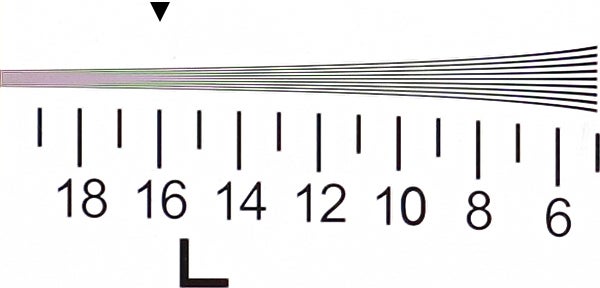
Sony A7 III, Raw, ISO 100. Multiply the number below the line by 200 for the resolution in lines/picture height
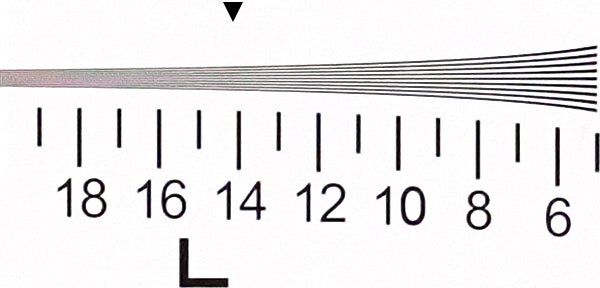
Sony A7 III, Raw, ISO 6400. Multiply the number below the line by 200 for the resolution in lines/picture height
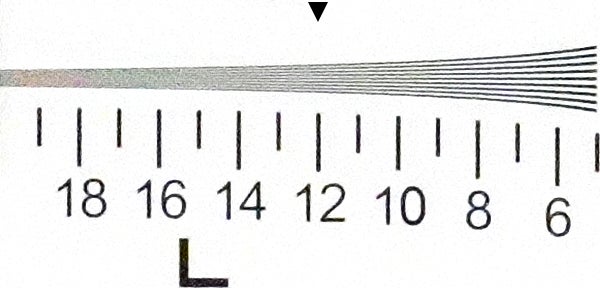
Sony A7 III, Raw, ISO 51200. Multiply the number below the line by 200 for the resolution in lines/picture height
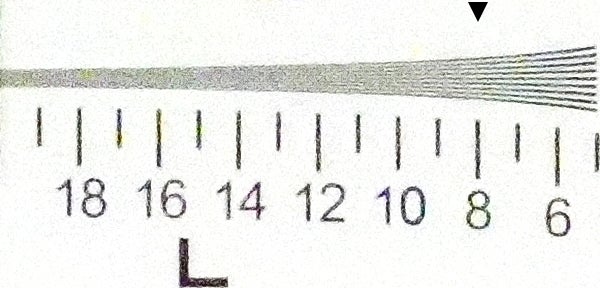
Sony A7 III, Raw, ISO 204800. Multiply the number below the line by 200 for the resolution in lines/picture height
Noise
Casting our eyes over our diorama test results reveals that the A7 III performs slightly better than its predecessor at high ISO, thanks to its backside-illuminated architecture. Noise-free images are produced between ISO 50 and ISO 1600, with luminance noise only starting to creep in to Raw files at ISO 3200 and ISO 6400. Users can push up to ISO 12,800 or ISO 25,600 and achieve very acceptable results at both these setting by applying a little noise reduction in post.
Colour remains vivid and punchy between ISO 50 and ISO 12,800, with barely any drop in saturation at ISO 25,600. Increased noise and loss of detail is obvious at ISO 51,200, so ISO 25,600 is the limit I’d set in Auto ISO or be willing to use in a low-light situation. The upper ISO 102,400 and ISO 204,800 settings might sound good to have, but in truth you’ll want to give them a miss; the greatly reduced level of detail and chroma noise leaves much to be desired.
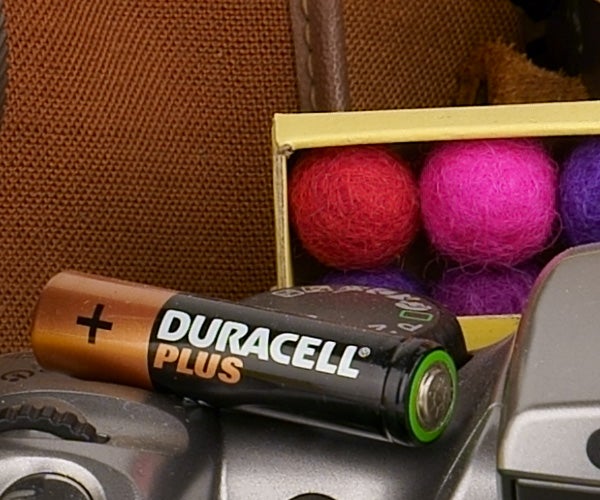
Sony A7 III, Raw, ISO 100
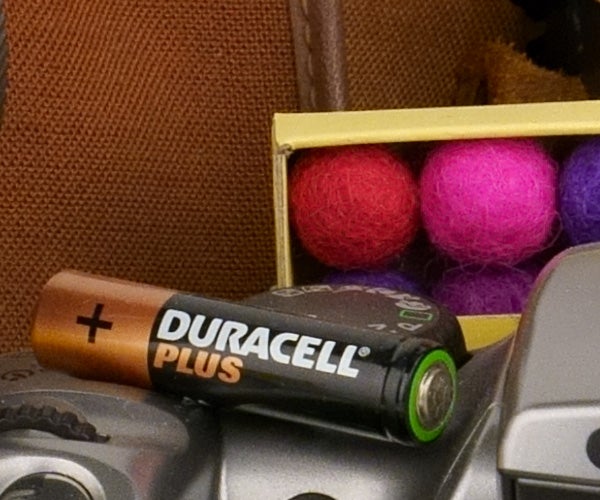
Sony A7 III, Raw, ISO 1600
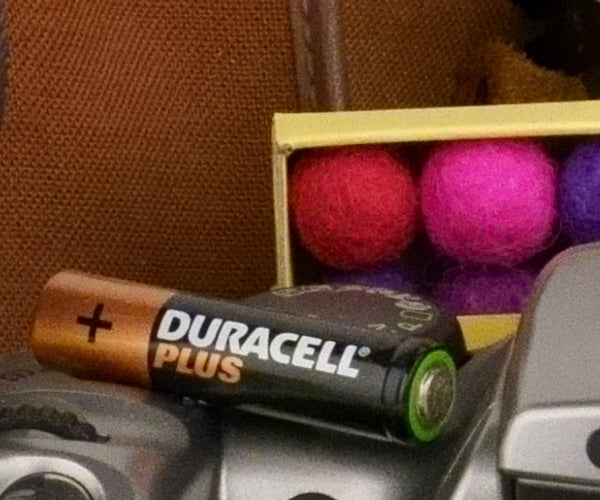
Sony A7 III, Raw, ISO 6400
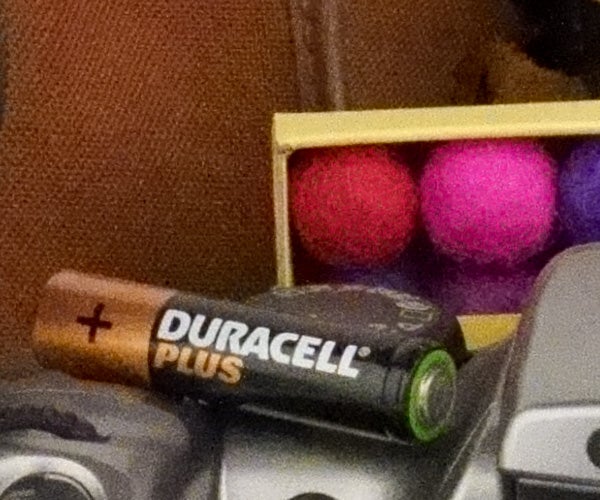
Sony A7 III, Raw, ISO 25600
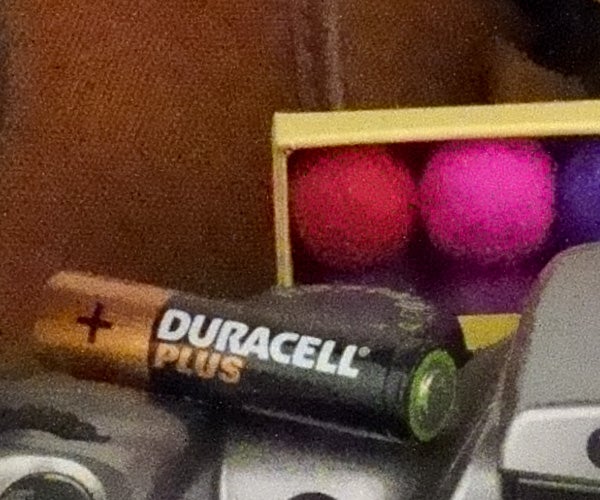
Sony A7 III, Raw, ISO 51200
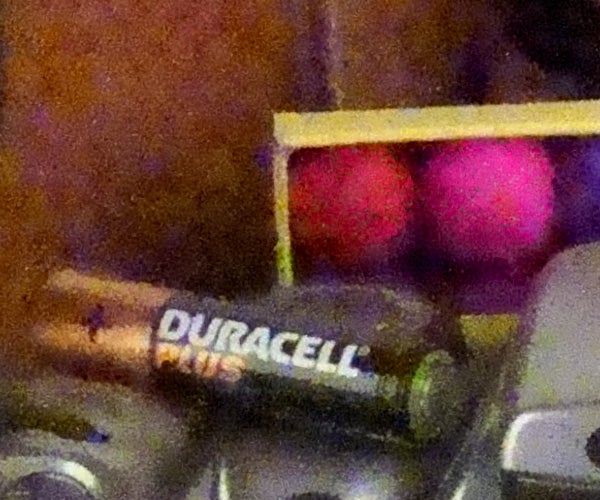
Sony A7 III, Raw, ISO 204800
Why buy the Sony A7 III?
With the A7 III, Sony has hit the sweet spot of what many photographers want from a full-frame model that falls under £2000.
The criticisms we previously made about the A7 II – notably the colour accuracy of its EVF, lack of silent mode, poor battery stamina and sluggish focusing on erratic subjects – have all been ironed out, and the superb 693-point AF system and effective in-body stabilisation system merge very well with its improved control layout.
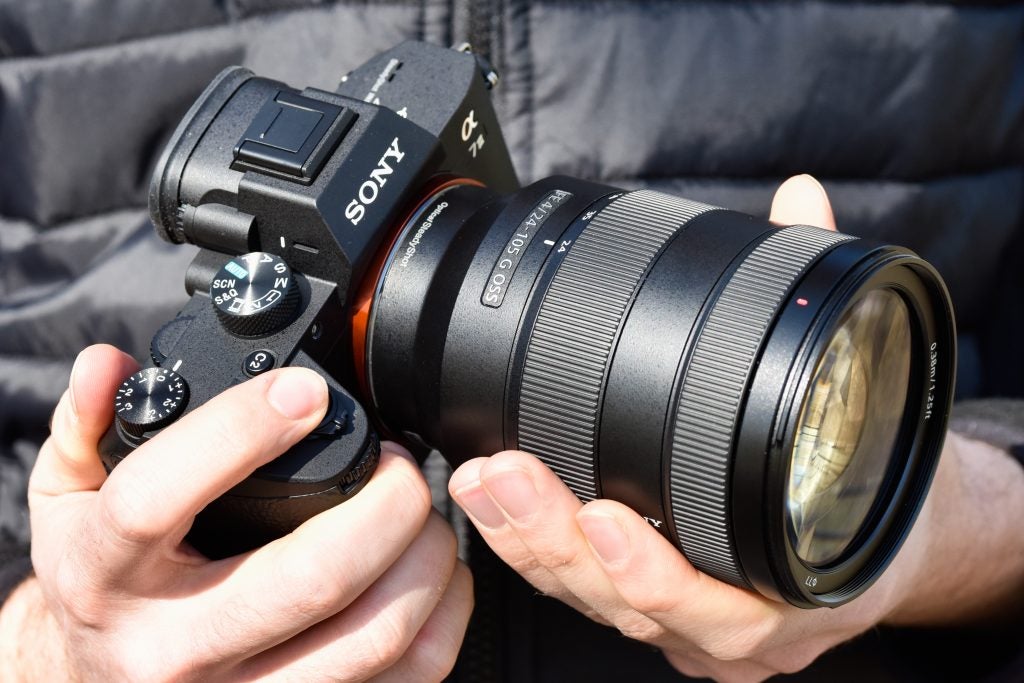
It doesn’t rattle out a continuous burst at the same blazing speed as the Alpha 9, nor does it deliver the same high resolution as the Alpha 7R III. However, it succeeds at what a great all-rounder should do, which is to perform outstandingly well when challenged by a variety of different subjects and scenarios.
Within a few minutes of picking up and using the A7 III you’ll realise how far it has come from the A7 II and how much more complete it feels. From an operational perspective it’s more intuitive to use, it happily keeps apace with unpredictable subjects, and combines all of the above with sensational image quality in its Raw files, even at high ISO.
I have a few doubts over the lack of weather-sealing around the accessory ports, the grey-outlined AF point annoys a bit, and the touchscreen could be better executed to include menu control. But these are relatively minor quirks on what is an astonishingly good mirrorless camera.
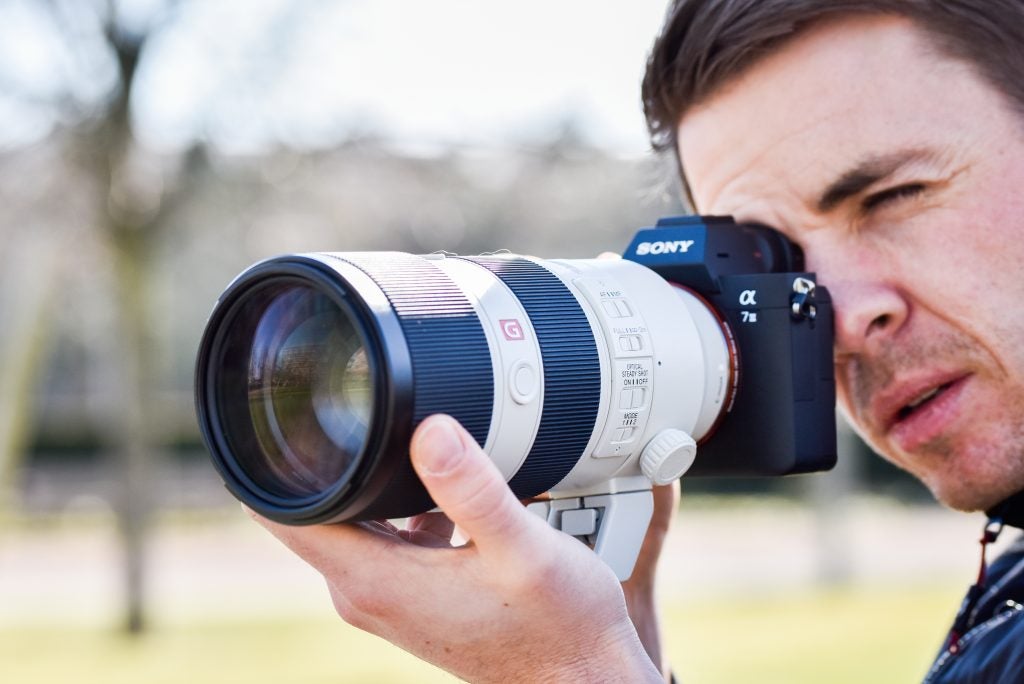
Take into consideration that it’s smaller, lighter, faster and more sophisticated than the Canon EOS 6D Mark II, Nikon D750 and Pentax K-1 Mark II, and it’s hard to dispute that it’s the most attractive full-frame camera, offering the best value for money at its price point right now.
Ultimately, it has the power to be a DSLR killer, which is a big reason why Canon and Nikon are both rumoured to be releasing mirrorless rivals later in 2018. As well as attracting those looking to make the jump to full-frame, it will influence many photographers to make the switch to mirrorless and shoot Sony.
Related: Amazon Prime Day 2018
Verdict
Simply put, the Sony A7 III is the finest example of the most affordable full-frame camera on the market. It’s a sensational camera for the money and compliments the ever-evolving Sony A7-series quite brilliantly.


